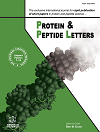
Full text loading...
Immune responses depend on the identification and prediction of peptides that bind to MHC (major histocompatibility complex) class I molecules, especially when it comes to the creation of vaccines, cancer immunotherapy, and autoimmune disorders. The ability to predict and evaluate MHC class immunoproteomics have completely transformed I epitopes in conjunction with immunoinformatics technologies. However, precisely identifying epitopes across various populations and situations is extremely difficult due to the complexity and diversity of MHC class I binding peptides. The most recent developments in immunoinformatics technology that have improved MHC class I epitope prediction are examined in this article. The sensitivity and specificity of epitope prediction have been greatly enhanced by recent developments that have concentrated on bioinformatics algorithms, artificial intelligence, and machine learning models. Potential epitopes are predicted using large-scale peptide-MHC binding data, structural characteristics, and interaction dynamics using tools like NetMHC, IEDB, and MHCflurry. Additionally, the integration of proteomic, transcriptomic, and genomic data has improved prediction accuracy in real-world scenarios by enabling more accurate identification of naturally occurring peptides. Furthermore, newer techniques like deep learning and multi-omics data integration have the potential to overcome peptide binding prediction constraints. Utilizing these technologies is expected to speed up the identification of new epitopes, improve the accuracy of immunotherapy techniques, and enable customized vaccine development. These innovative techniques, their uses, and potential future developments for improving MHC class I epitope prediction in immunoproteomics are highlighted in this study.

Article metrics loading...

Full text loading...
References


Data & Media loading...

